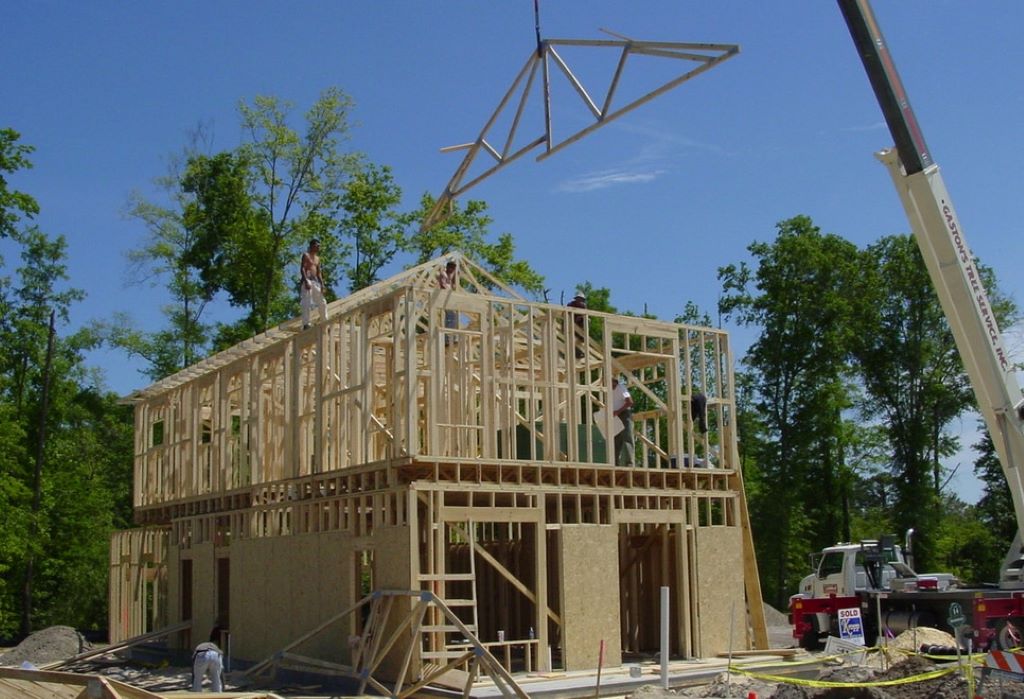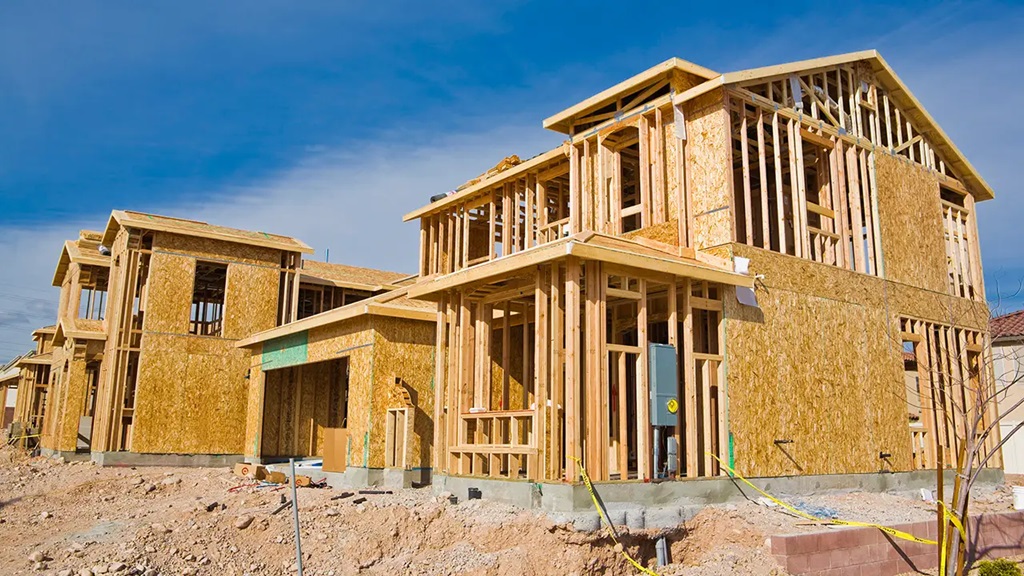For professionals familiar with the construction industry, the term “stick built” is a commonly used phrase. This method of traditional construction involves building a home on-site, piece by piece, using lumber or timber framing. In this comprehensive guide, we’ll take a deep dive into the pros and cons of this construction method, as well as the technical details you need to know about stick built homes.
How Stick Built Homes Are Constructed
The term “stick built” refers to the method used to construct the home. It gets its name because pieces of dimensional lumber, or “sticks,” are used to frame and support the structure. Here’s a closer look at how it works:
Built On-Site
Piece by Piece Unlike prefabricated homes manufactured offsite and transported once completed, stick built homes are constructed directly on your property. The builders start with the foundation and then use various wooden beams and supports to frame up the floors, walls, and roof system one element at a time.
Requires Skilled Carpentry
Erecting a home in this manner demands true carpentry skills. Framing carpenters cut, join, and assemble all the structural wooden components by hand per the building plans. Proper measuring and precision are paramount to ensure structural integrity. Shoddy workmanship can result in flaws and safety hazards.
Time and Labor Intensive Process
Completing all the necessary framing, sheathing, roofing, insulating, heating systems, drywall, trims and finishes for an entire home demands substantial man hours. Most stick built homes take a minimum of 6-8 months to finish because much of the work simply can’t be rushed. This makes for a longer timeline compared to modular construction.
Offers Flexibility and Customization
On the positive side, because the homes are built from the ground up at the location, there is tremendous flexibility in layouts and design features. Floor plans can be completely tailored to suit the homeowner’s lifestyle and preferences with customized add-ons like bay windows, dormers and accent trusses fairly seamless to integrate.
Overall, the onsite step-by-step process allows homeowners to fully personalize their perfect living space, but does require more patience through an extended construction schedule.
Common Building Materials
While any structural materials like steel beams or concrete blocks can be incorporated, stick built homes are predominantly comprised of dimensional spruce-pine-fir lumber and plywood sheathing.
Wood Framing
The skeleton of the home is framed using carefully engineered solid sawn lumber. Dimensional lumber (the official name for standard size boards) provides exceptional strength thanks to the dense grain structure. Common dimensions are 2 x 4s, 2 x 6s, 2 x 8s, 2 x 10s and 2 x 12s.
Floor Joists: These form the substructure to support each floor. Joists are normally comprised of 2 x 8, 2 x 10 or 2 x 12 boards depending on the span lengths.
Wall Studs: These vertical boards give shape to the exterior and interior walls, and range from 2 x 4s to 2 x 6s depending on wall height and engineering plans.
Roof Rafters: Angled rafters provide the underlying structure for roof sheathing installation. 2 x 6, 2 x 8 and 2 x 10 are typical dimensions.
Engineered Wood Products
Once the frame is rock solid, various sheathing materials are affixed to the outside. The most common include:
Plywood: This thin sheet product made from layers of wood veneers delivers exceptional structural integrity and weather resistance. Used for roof sheathing and wall sheathing.
Oriented Strand Board (OSB): Comprised of wood chips and resin glue, OSB offers similar structural properties to plywood for a more affordable price. Commonly used for wall sheathing.
Other Components Beyond the structural lumber and sheathing, stick built homes incorporate traditional finishing materials:
- Drywall
- Fiber cement siding
- Asphalt shingle roofing
- Insulation (fiberglass batts)
- Windows and doors
- Plumbing and electrical
In other words, the sky’s the limit for interior and exterior finishes! Compare this versatility to prefab and modular homes which arrive with many of these elements pre-installed.
Key Benefits of Stick Built Homes
Stick built construction affords several advantages that explain its enduring popularity in the single-family housing sector:
#1. Personalized Design flexibility
Since stick built homes are erected on-site piece by piece, the layouts and footprints can be completely customized rather than limited to standardized plans from a factory. Homeowners have the flexibility to articulate their unique vision, whether that’s an open-concept great room, a luxurious master retreat, or a gourmet kitchen. Any architectural style from sprawling ranch to contemporary is achievable.
You also have more control over selecting high end fixtures, finishes, appliances and hardware rather than relying on the model home’s options. The ability to customize every nook and cranny makes your residence truly one-of-a-kind.
#2. Higher Quality Craftsmanship
Another advantage is the ability to oversee construction quality every step and insist on excellent workmanship. Production-built methods certainly deliver consistency and structural integrity, but they also involve some factory automation. Since each phase of stick built happens manually relying on carpenter expertise, you can scrutinize the progress and quality of framing, insulation, drywall, paint and trim details.
Meticulous attention results in fewer flaws and superior fit and finish for things like cabinetry, tilework and moldings. This high level of quality craftsmanship enhances aesthetics and functionality for generations.
#3. Better Long Term Performance
In addition to gorgeous aesthetics, stick built excels at robust structural integrity and durability. The dimensional lumber frame formed on-site can be engineered to meet even the strictest codes for snow load capacities and seismic resilience. Walls and roof structures have endured for over a century thanks to sturdy wood’s strength and natural resistance to rot and insects.
Proper maintenance like paint, roof repairs and updating worn surfaces preserves the home’s bones protecting your investment. And unlike manufactured methods which can show wear within 25 years, stick built homes stand the test of time resulting in fewer repairs and lower carrying costs.
#4. Easier to Renovate in the Future
Wood-frame construction generates very little site waste makes remodeling projects simpler to undertake when needs change. Tasks like adding a master suite addition, bumping out a kitchen or finishing the basement simply require tying into the existing structural framework. The original wall cavities also make it simple to upgrade electrical, plumbing and technology down the road.
Overall flexibility for renovations ensures stick built homes readily adapt as families grow without requiring costly design workarounds. Owners gain more usage from their dwelling over multiple generations.
#5. Offers Better Resale Value
Finally, personalized design, quality details and outstanding durability boosts resale value dramatically compared to off-the-shelf homes. Not only does this represent a wise long term investment as neighborhoods improve, but higher appraisal value means favorable lending terms for the next owners. Affordability is optimized for future buyers.
In an economic landscape where homeowners change residences frequently, stick built’s customizable nature and rugged performance offers superior value retention. That significantly minimizes financial risks.
Potential Downsides to Consider
Of course, stick built does come with a few potential disadvantages too:
- Requires Longer Construction Timeline: As mentioned previously, the sequential process extends project completion typically 6 months to a year. Factor this into financial planning.
- Higher Upfront Costs: Artisanal construction and premium materials raises budgets above cookie-cutter homes. Expect higher per-square-foot expense of 10-15%.
- Dependent on Contractor Skill: A deficiency of carpentry proficiency affects overall quality. Screen builders thoroughly checking references and ratings.
- Not as Eco-Friendly Out of the Gate: Offsite assembly generates less waste. But stick built can readily incorporate green technology that balances footprint over decades of use.
Overall the few limitations mainly impact short term objectives, while benefits accrue substantially long term.
Stick Built Homes: Key Takeaways
- Constructed piece by piece onsite using dimensional lumber and plywood
- Skilled carpenters are needed to carefully assemble structural framework
- Offers customization flexibility in layouts plus construction materials/finishes
- Ability to oversee quality workmanship ensures construction excellence
- Superior durability and structural integrity lasts for generations
- Easier to renovate in future as needs change
- Build equity and optimize resale value long term
If personalized design, quality craftsmanship and enduring legacy sound appealing, then stick built is likely the right construction method for bringing your dream home plans to fruition!
Frequently Asked Questions
How much more expensive is stick built thanprefab or modular?
While dependent on factors like location and finishes chosen, stick built typically runs $15-25 per square foot higher. But keep in mind you recoup much of the premium long term through energy efficiency customization and higher resale value.
Do stick built homes have any structural flaws or stability issues?
When properly engineered and constructed to code standards by qualified framers, the dimensional lumber framework provides exceptional structural integrity and resilience. Pay attention to builder qualifications, get all inspections done, and address any issues immediately for satisfying results.
Can you incorporate green technology into stick built homes?
Absolutely – stick built offers lots of flexibility to go green. Strategies like energy efficient insulation, high performance windows, Energy Star appliances and LED lighting drastically reduce environmental impact. You can even install rooftop solar panels or geothermal HVAC systems. Site orientation, overhangs and climate specific materials aid further.
What if I’m not good at visualizing floorplans and layouts?
Reputable builders have expert design teams well versed in creating plans tailored specifically to your vision, lifestyle needs and budget. They also have computer 3D modeling capabilities to help you visualize the complete home before finalizing choices. Rely on their wealth of expertise.
Is it risky to invest in a custom designed property?
It’s sensible to be concerned about resale potential down the road. But data shows stick built commands far higher valuations and quicker sales versus cookie cutter homes. Buyers are much more emotionally drawn towards unique spaces showcasing artistry. Follow designer guidance and your property will generate outstanding future returns.
In summary
Stick built homes offer a compelling opportunity to own a genuinely customized living space delivering superior occupant enjoyment, uncompromising quality, enduring structural integrity and outstanding resale value for decades.
Although the onsite construction process demands more time and higher budgets, homeowners reap considerable long-term rewards from the unmatched flexibility to achieve their vision while building lasting equity. Careful selection of talented builders expert at delivering craftsmanship excellence and scrutinizing every phase mitigates risks enormously.
In an era where homebuyers prioritize quality materials, flawless execution, resilient performance, and invest in the pride of ownership and legacy for future generations, kit homes are becoming more popular as they offer a prime path for manifesting dream residences that stand the test of time structurally and serve as meaningful sanctuaries; their one-of-a-kind nature creates joyful spaces beloved by owners and admired by prospective buyers when the time eventually comes to pass the torch.






